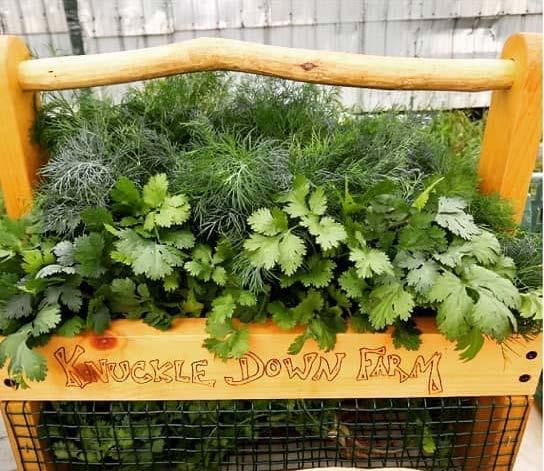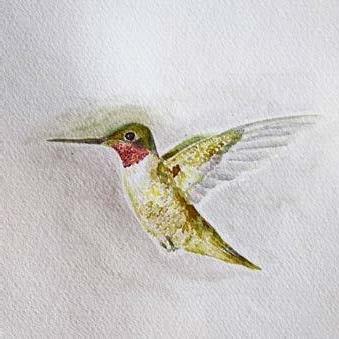
6 minute read
Happy to See... Buckthorn?
By Kate Hayday, Maker’s Dozen, Quinte Chapter
When I forage in our woods, my goal is impossible math: can I remove something and give something back at the same time? Foraging for invasive species is one of the best ways I have found to achieve this. There is one invasive plant in particular I forage for here, not for food, but for colour. And that plant is common buckthorn (Rhamnus cathartica).
Advertisement
Many woodlot owners are familiar with this aggressive plant. It shows up early to the party and stays late, budding out in the early spring and holding on to its leaves well after everyone else has called it a season. Buckthorn does not play fair, but it can work beautifully—out of the woods, and in the maker’s workshop. I currently have three favourite foraging uses for buckthorn: as basket handles, as dye, and as ink.
A-Tisket A-Tasket, Buckthorn Makes a Basket
There is something very pleasing about a basket with a natural handle, and when we make harvest baskets, we often finish them with a buckthorn handle. Buckthorn wood is strong and sturdy enough to hold a full load of summer squash without breaking a sweat. I find a good-sized straight-ish branch to form the handle and use a draw shave to peel off the bark and give it a smooth finish. But hold on to that bark because we are not done with it yet.
Basket with Buckthorn handle
Dyeing with Buckthorn Bark
Into the dye pot the buckthorn bark goes! Dried buckthorn bark can be used to dye wool roving (unspun strands of wool fibre). With different treatments, it yields two very distinct colours: a ruddy pink and a mustard yellow. I source undyed/light coloured wool roving from local farmers and dye it for needle-felting (using notched needles to interlock wool fibers to form a more condensed material). The yellow in the little bee in this photo is made with buckthorn bark. Wool takes up the colour from buckthorn bark without needing a mordant (a substance that combines with a dye or stain and thereby fixes it in a material), meaning all you need to give the mustard colour a try at home is bark, wool, and water. I have not yet done rigorous tests, but I have generally found the dyed wools to be surprisingly colour and lightfast. Achieving the yellow versus the pink colour comes down to how you process your bark, specifically how alkaline you make your solution. Bark simply boiled will yield the mustardy yellow colour, but if fermented and kept alkaline, the same bark will yield a rich rose pink.
Boiled Buckthorn for Mustard Yellow
• 50 grams of dried buckthorn bark • 100 grams of wool roving (no mordant needed) • *amounts can be adjusted, so long as the proportions stay roughly the same (e.g. 2:1 wool to bark) • Place buckthorn bark in a non-reactive (e.g. stainless steel) saucepan. • Pour boiling water over the bark and leave it to sit overnight. • The next day simmer the bark gently for an hour. • Wet your wool fibre. • Strain the bark out of the pot and add the damp fibre to the dye water. • Let the fibre sit in the mixture for an hour or longer without stirring. Let the fibre cool, and then rinse. Make sure you are not changing the temperature of A Bee made with wool the wool with your rinse water dyed with Buckthorn or it may felt.
Fermented Buckthorn for Ruddy Rose
• 100 grams dried buckthorn bark • 100 grams wool roving (no mordant needed) • Washing soda (I buy mine from Home Hardware) • Water • pH paper (if not available, google how to make a natural pH tester from cabbage!) • 1L+ bucket or large mason jar • Mix 1 tsp of washing soda with 100 ml of hot water.
Add to your container. (N.B. - In dealing with an alkaline solution protective equipment such as goggles, and gloves should be used.) • Top up your container to the 1L mark with cool water. • Add 100 grams of buckthorn bark. Stir well and place the lid on top. Do not seal tightly, as fermentation could cause it to burst. • Test the pH. Ensure it is around 9+ and add more washing soda if needed, 1 tsp at a time. Always dissolve your soda first in a bit of hot water before adding it to the mixture. • For a week or two, check the pH each day to ensure it is 9+. If it is not, add more dissolved washing soda to keep the mixture alkaline. • After a couple of weeks fermenting the buckthorn, wet your wool thoroughly in cool water and add it to your container. Make sure your wool is fully submerged in the liquid. • Check on your wool every few days, continuing to test and maintain your pH at 9+. Remove and rinse the wool once you are happy with the colour. It can take as long as a few weeks to develop good colour. (Dye recipes adapted from wildcolours.co.uk)
Wild Inks from Buckthorn Bark and Berries
Besides mustard yellow and ruddy rose, buckthorn has even more colours to offer including purple, green, and brown wild inks. I make a brown wild ink very simply, just by cooking the bark until I have cooking water that looks like it will stain the page (test by dipping a piece of paper into the solution). Buckthorn berries are absolutely stuffed with colours. On their own, crushed buckthorn berries yield a purple hue that will stain everything, including you. This wild juice can be used full strength or thinned with water as a “wild ink” for paintings. Like the bark, there is amazing colour alchemy when you begin changing the A Hummingbird drawing made with pH of the juiced Buckthorn-based inks berries. Made alkaline, the colour of the juiced berries will change dramatically to a green tone. The strongest way to do this is by adding a few drops of a lye solution to your juiced berries. As lye is very caustic, all safety gear should be used, and precautions must be taken before attempting this. Though you will need to add much more, and your ink may get very thick in the process, you can also attempt to shift the colour by adding different alkaline ingredients, such as washing or baking soda. If desired, natural wild inks can be made more viscous by adding gum arabic (available at art supply stores). I extend the life of my homemade wild inks by storing them in the fridge. If you are interested in making your own inks, the wonderful book “Make Ink” by Jason Logan is definitely the place to start. Other fabric and ink artists have experimented with coaxing even more colours from buckthorn’s bark, leaves and berries—next time you cull buckthorn from your woods, try your own experiments! I would love to hear what rainbows you find in your foraging. Happy Make-ing! A Toad drawing made with Buckthornbased inks












